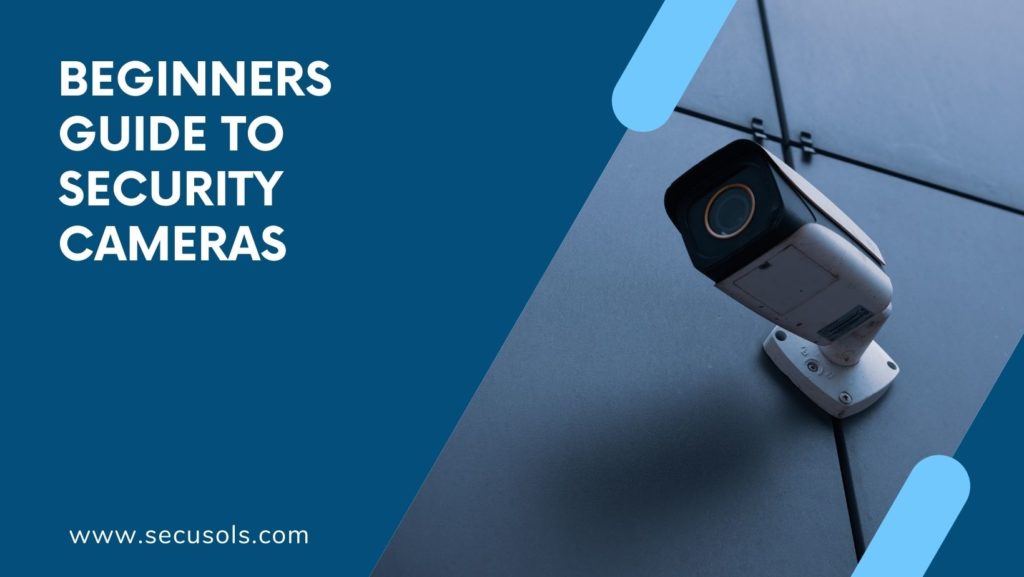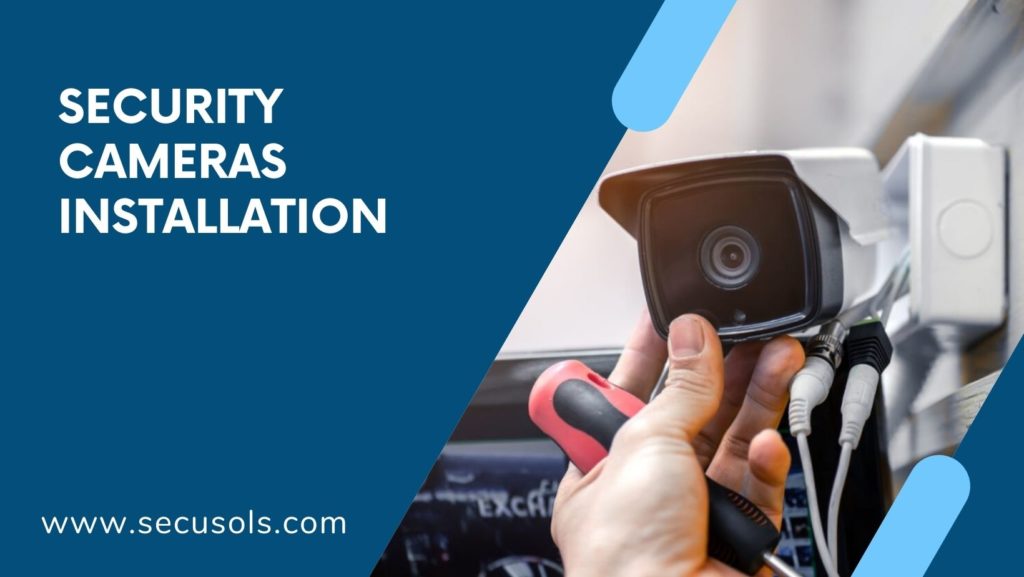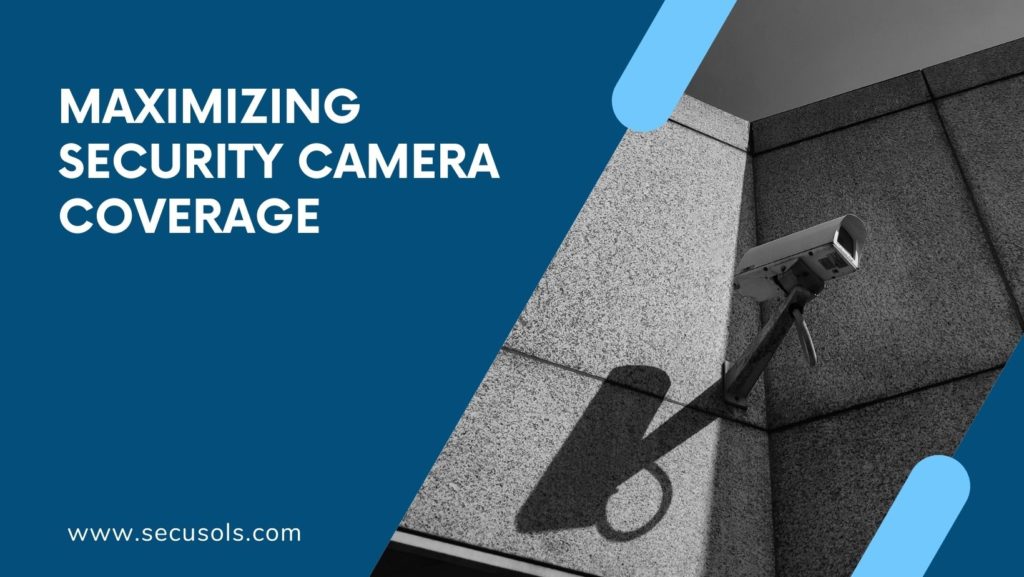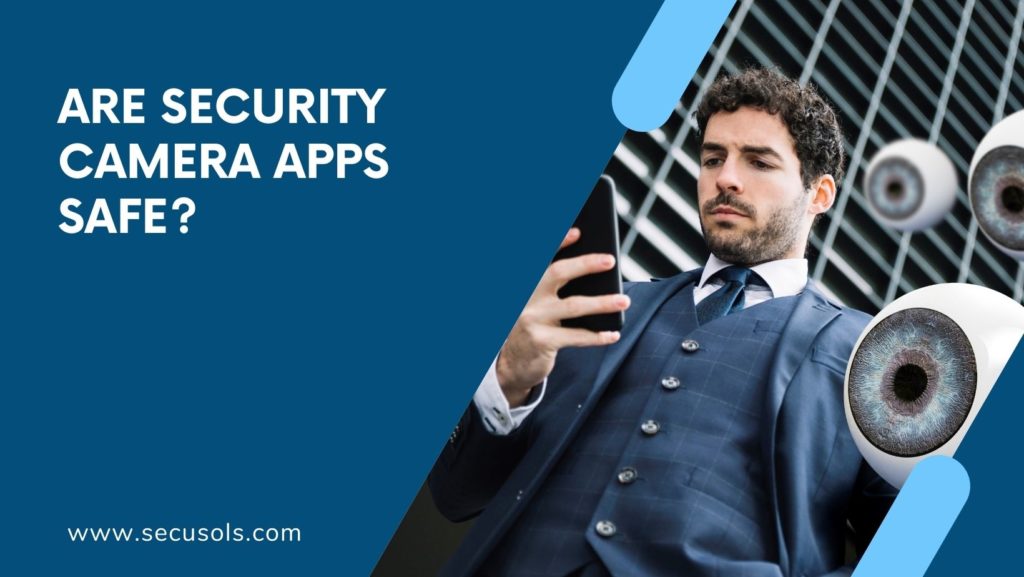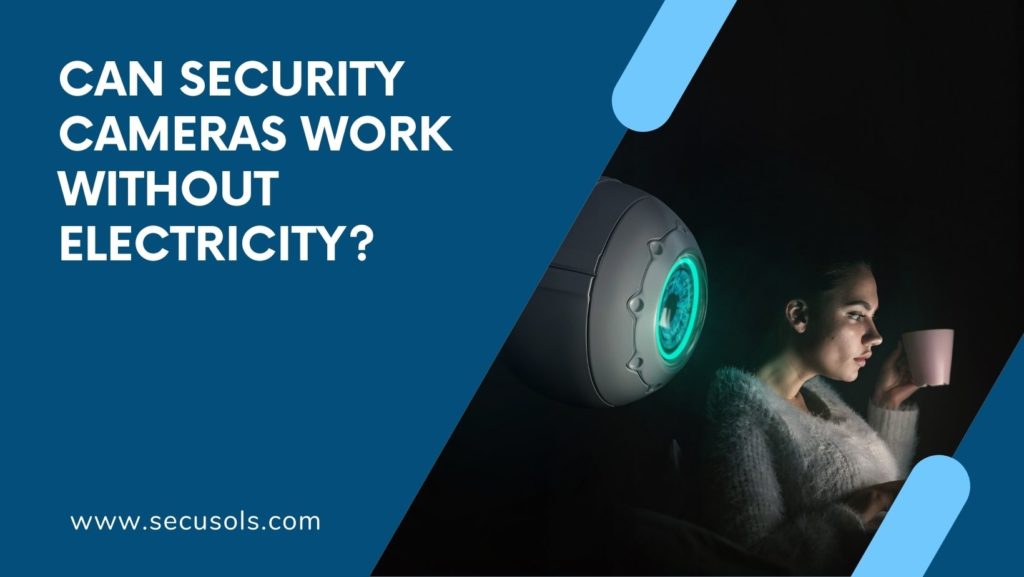Hey there, security-conscious readers! Are you looking to enhance the safety and security of your surroundings? Well, you’ve come to the right place. In this blog, we’re going to delve into the world of security cameras and equip you with the knowledge to make informed decisions. We’ll explore why security cameras are essential in today’s world, discuss the purpose and benefits of installing them, and provide you with a detailed overview of the content we’ll be covering. So, buckle up and get ready to take a deep dive into the fascinating realm of security cameras!
Understanding Security Cameras
A. Types of Security Cameras
When it comes to security cameras, there are several types available, each with its own unique features and advantages. Let’s explore some of the most common types you’ll come across:
Wired Cameras:
Wired cameras, as the name suggests, require a physical connection to transmit video footage. They are often preferred for their stable and reliable performance. These cameras are typically connected to a recording device or a central monitoring system using cables. While the installation process may be a bit more involved due to the need for wiring, wired cameras offer a consistent and secure connection, making them a popular choice for long-term surveillance needs.
Wireless Cameras:
Wireless cameras, on the other hand, operate without the need for physical cables, relying instead on wireless technology such as Wi-Fi or Bluetooth to transmit video and audio signals. One of the significant advantages of wireless cameras is their flexibility in terms of placement. You can install them virtually anywhere within the range of your wireless network, making them suitable for both indoor and outdoor surveillance. However, it’s important to ensure a reliable and robust Wi-Fi signal for optimal performance.
IP Cameras:
IP (Internet Protocol) cameras have gained significant popularity in recent years. These cameras utilize your network infrastructure to transmit video data, allowing for seamless integration with other IP-based devices and systems. IP cameras provide high-resolution video footage and advanced features such as remote accessibility, motion detection, and analytics. They can be wired or wireless and offer scalability, making them ideal for both small-scale and large-scale surveillance applications.
Dome Cameras:
Dome cameras are named after their dome-shaped design. These cameras are commonly used in indoor or outdoor environments where discreet monitoring is desired. The dome housing not only protects the camera from vandalism and tampering but also makes it difficult for individuals to determine the camera’s exact focal point and direction. Dome cameras are available in both wired and wireless variants and are suitable for applications where aesthetics and deterrence are important.
B. Factors to Consider When Choosing Security Cameras
One of the most important factors to consider when selecting a security camera is its resolution and image quality. The resolution determines the level of detail captured in the footage, with higher resolutions offering clearer and more defined images. The most common resolutions available are 720p (HD), 1080p (Full HD), and 4K (Ultra HD). Keep in mind that higher resolution cameras may require more storage space. Consider your specific surveillance needs and the level of detail required to identify people or objects effectively.
Resolution and Image Quality:
Field of View and Coverage Area:
The field of view (FOV) refers to the extent of the area captured by a camera. It is determined by the lens size and angle. Consider the size and layout of the area you want to monitor and choose a camera with an appropriate FOV. A wider FOV allows you to cover larger areas with fewer cameras. However, if you need more detailed surveillance in a specific area, a narrower FOV may be preferable. Additionally, consider cameras with adjustable angles or pan-tilt-zoom (PTZ) capabilities to enhance coverage flexibility.
Night Vision Capabilities:
Effective surveillance doesn’t stop when the sun sets. That’s why considering night vision capabilities is crucial when selecting security cameras. Night vision allows cameras to capture clear images in low-light or dark environments. Look for cameras with infrared (IR) LEDs that provide sufficient illumination in darkness. The range of night vision varies among cameras, so evaluate your specific needs based on the area you want to monitor at night.
Weatherproofing and Durability:
If you plan to install outdoor security cameras, it’s essential to choose models that are weatherproof and durable. Outdoor cameras are exposed to various elements, including rain, snow, dust, and extreme temperatures. Look for cameras with an Ingress Protection (IP) rating that indicates their resistance to water and dust. A higher IP rating, such as IP66 or IP67, ensures better protection against the elements. Additionally, consider cameras made with robust materials and sturdy construction to withstand vandalism or tampering attempts.
Power Source Options:
Security cameras require a power source to operate. When choosing a camera, consider the available power source options that suit your specific setup. Wired cameras typically require a direct connection to an electrical outlet or a power-over-Ethernet (PoE) setup. Wireless cameras, on the other hand, may be powered by batteries, solar panels, or rechargeable batteries. Assess the accessibility of power sources in the installation area and determine which option aligns best with your needs and preferences.
Planning Your Security Camera System
A. Assessing Your Security Needs:
Before diving into the installation process, it’s crucial to assess your security needs thoroughly. Take the time to identify the specific areas or assets you want to monitor. Consider the potential risks and vulnerabilities that you aim to address with your security camera system. Are you concerned about theft, vandalism, or unauthorized access? Understanding your security objectives will help you make informed decisions throughout the planning and installation process.
B. Determining the Number of Security Cameras Required:
Once you’ve assessed your security needs, the next step is to determine the number of cameras required to cover your desired areas effectively. Start by creating a comprehensive blueprint or diagram of your property, noting the locations that need surveillance. Consider both indoor and outdoor spaces, including entry points, hallways, parking lots, and other vulnerable areas. By visualizing the coverage areas, you can better estimate the number of cameras needed to provide adequate surveillance.
C. Placement Considerations:
When it comes to camera placement, strategic positioning is key to maximizing the effectiveness of your security camera system. Consider the following factors:
Entry Points and Vulnerable Areas:
Focus on key entry points, such as doors, windows, and gates, as well as any other areas that are particularly vulnerable to unauthorized access or criminal activity. These high-priority locations should have dedicated camera coverage to capture any suspicious or unusual activities.
Exterior vs. Interior Placement:
Decide whether you need cameras for outdoor or indoor surveillance, or both. Outdoor cameras should be weatherproof and capable of withstanding various environmental conditions. Indoor cameras, on the other hand, may require different features such as discreet design or audio recording capabilities, depending on the specific area being monitored.
Height and Angle for Optimal Coverage:
Camera placement height and angle play a crucial role in capturing the desired coverage area. Consider the optimal mounting height that provides a comprehensive view while minimizing blind spots. Adjust the camera angle to focus on the specific area of interest, whether it’s a walkway, parking lot, or room. Experiment with different heights and angles during the installation process to find the optimal settings.
Concealing vs. Visible Cameras:
Decide whether you want to make your cameras visible as a deterrent or conceal them for discreet monitoring. Visible cameras can act as a preventive measure, deterring potential intruders. However, in certain situations, such as undercover investigations or sensitive environments, you may prefer concealed cameras to capture activities without alerting anyone to their presence.
Setting Up Your Security Cameras
A. Installation Process:
Mounting Options and Tools Required:
The first step in setting up your security cameras is selecting the appropriate mounting option for your chosen camera type and the desired coverage area. Common mounting options include wall mounts, ceiling mounts, and pole mounts. Consider factors such as the camera’s field of view, angle adjustment capabilities, and accessibility for maintenance when choosing the mounting option. Make sure to use the necessary tools such as screws, brackets, and anchors to securely install the cameras.
Running Cables (for Wired Cameras):
If you’ve opted for wired cameras, running cables is an essential part of the installation process. Start by planning the cable routes, ensuring they are discreet and protected from potential damage. Carefully measure and cut the cables to the appropriate length, taking into account the distance between the camera and the recording device or power source. Use cable clips or conduit to secure the cables and maintain a neat and organized appearance.
Connecting Wireless Security Cameras to a Network:
For wireless cameras, the installation process is generally simpler since they don’t require physical cables. However, they need to be connected to your network for data transmission. Start by positioning the camera within the range of your Wi-Fi network. Ensure that your network signal is strong and stable in the installation area. Follow the manufacturer’s instructions to connect the camera to your Wi-Fi network using the provided app or software. Make sure to secure your wireless network with a strong password to prevent unauthorized access.
Remember, during the installation process, it’s important to follow the manufacturer’s guidelines and instructions specific to your chosen camera model. This ensures proper setup and maximizes the camera’s performance. If you’re unsure about any aspect of the installation, consult professional help to ensure a seamless and reliable setup.
B. Configuring Camera Settings:
Once you’ve successfully installed your security cameras, it’s time to configure their settings to optimize their performance and functionality. Let’s dive into the key aspects of camera configuration:
Accessing the Security Camera’s Interface:
To configure your camera settings, you’ll need to access its interface. Most cameras provide a web-based interface that can be accessed through a web browser using the camera’s IP address. Alternatively, some cameras may have dedicated software or mobile apps for configuration. Consult the camera’s manual or manufacturer’s instructions to determine the appropriate method for accessing the camera’s interface.
Adjusting Video Settings (Resolution, Frame Rate, etc.):
Within the camera’s interface, you’ll find various video settings that allow you to customize the image quality and recording parameters. Adjust the resolution based on your needs, balancing storage capacity with the desired level of detail. Consider adjusting the frame rate as well—higher frame rates capture smoother video but require more storage space. Experiment with different settings to find the optimal balance for your specific surveillance requirements.
Enabling Motion Detection and Alerts:
Motion detection is a valuable feature that helps conserve storage space and provides alerts for potential security breaches. Configure the motion detection settings within your camera’s interface to define the sensitivity level and the areas of the frame where motion should trigger alerts. Fine-tune these settings to avoid false positives, such as triggering alerts from swaying trees or passing vehicles. Set up email or push notifications to receive real-time alerts when motion is detected.
Setting Up Remote Viewing Options:
One of the key advantages of modern security cameras is the ability to remotely access live feeds and recorded footage. To enable remote viewing, you’ll need to configure network settings within the camera’s interface. This typically involves setting up port forwarding or using a dynamic DNS service if you want to access the camera outside your local network. Consult the camera’s manual or manufacturer’s instructions for specific guidance on remote viewing setup. Additionally, consider using secure methods such as encryption and strong passwords to protect your camera’s access from unauthorized individuals.
Maximizing Security Camera Performance
A. Regular Maintenance and Cleaning:
To ensure optimal performance and longevity of your security cameras, regular maintenance and cleaning are essential. Periodically inspect the cameras for any signs of damage or wear and tear. Clean the camera lenses to remove dust, dirt, or smudges that can affect image quality. Check cables and connections for any loose or damaged parts. By conducting routine maintenance, you can prevent issues and maintain the effectiveness of your surveillance system.
B. Testing Camera Angles and Positioning:
Even after installation, it’s important to periodically test and adjust the camera angles and positioning. Over time, environmental factors, such as vegetation growth or changes in lighting conditions, may impact the camera’s field of view or image quality. Conduct regular tests to ensure that the cameras are capturing the desired coverage area and that there are no blind spots. Make necessary adjustments to camera angles or repositioning to maintain optimal surveillance coverage.
C. Upgrading Firmware and Software:
Manufacturers regularly release firmware and software updates for their security cameras to enhance performance, fix bugs, and address security vulnerabilities. It’s important to stay up to date with these updates. Check the manufacturer’s website or the camera’s interface for available updates and follow the instructions provided to upgrade the firmware and software. Keeping your cameras up to date ensures that you have access to the latest features, improvements, and security patches.
D. Ensuring Secure Access and Data Protection:
Strong Passwords and Authentication:
One of the primary measures to safeguard your security camera system is to set strong passwords and enable robust authentication methods. Avoid using default or easily guessable passwords. Create unique and complex passwords, consisting of a combination of letters, numbers, and special characters. Additionally, enable two-factor authentication (2FA) if supported, which adds an extra layer of security by requiring a secondary verification method, such as a code sent to your mobile device.
Encrypting Video Footage:
Protecting your video footage from unauthorized access is crucial. Ensure that your security camera system supports encryption protocols, such as Secure Socket Layer (SSL) or Transport Layer Security (TLS). Encryption ensures that your video data is transmitted and stored securely, making it harder for potential attackers to intercept or manipulate the footage.
Regularly Updating Software and Firmware:
Keeping your camera’s software and firmware up to date is not only important for performance but also for security. Manufacturers often release updates that address vulnerabilities or security flaws that could be exploited by hackers. Regularly check for updates and apply them promptly to protect your system from potential security breaches.
Monitoring and Managing Your Security Camera System
A. Accessing Live Video Feeds:
One of the primary benefits of a security camera system is the ability to access live video feeds in real-time. To monitor your cameras remotely, you can typically use a dedicated mobile app or access the camera’s interface through a web browser. Ensure that you have a stable internet connection for smooth video streaming. By accessing live video feeds, you can keep a close eye on your property, monitor activities, and respond promptly to any suspicious or alarming events.
B. Configuring Recording and Storage Options:
On-site vs. Cloud-Based Storage:
When it comes to recording and storage, you have two main options: on-site storage or cloud-based storage. On-site storage involves using a Network Video Recorder (NVR) or Digital Video Recorder (DVR) to store the video footage locally. Cloud-based storage, on the other hand, allows you to store your footage remotely in the cloud. Each option has its pros and cons. On-site storage provides more control over your data but may require additional hardware and maintenance. Cloud-based storage offers convenience and accessibility but may involve subscription fees and reliance on internet connectivity.
Selecting Appropriate Storage Capacity:
Regardless of whether you choose on-site or cloud-based storage, it’s important to select an appropriate storage capacity to accommodate your recording needs. Consider factors such as the number of cameras, desired retention period for recorded footage, and the resolution and frame rate of the recordings. Higher-resolution footage and longer retention periods will require more storage space. It’s advisable to calculate your storage requirements and choose a storage solution that meets your specific needs.
C. Reviewing and Exporting Footage:
At some point, you may need to review and export recorded footage for various reasons, such as investigating incidents or sharing evidence with law enforcement. Most security camera systems allow you to search and review footage based on specific timeframes or motion-triggered events. Within the camera’s interface or dedicated software, you can select the desired footage, trim or bookmark relevant segments, and export them in a compatible format for further analysis or sharing.
D. Integrating with Security Systems and Automation:
To enhance the effectiveness of your security camera system, consider integrating it with other security systems and automation tools. For example, you can integrate your cameras with an alarm system to trigger recording when an alarm is activated. Integration with smart home automation platforms allows you to control and monitor your cameras alongside other connected devices. Explore the possibilities of integrating your security cameras with access control systems, motion sensors, or even voice assistants to create a comprehensive and automated security solution.
Troubleshooting Common Issues
A. Poor Video Quality or Blurry Images:
If you’re experiencing poor video quality or blurry images from your security cameras, there are a few possible causes. Start by checking the camera lenses for any smudges, dirt, or obstructions. Clean the lenses carefully using a soft cloth to ensure clear visibility. If the issue persists, verify that the camera’s resolution and video settings are properly configured. Adjust the resolution, frame rate, and focus settings to improve the image quality. Additionally, ensure that your camera’s firmware and software are up to date, as updates often include performance improvements and bug fixes.
B. Connectivity and Network Issues:
When dealing with connectivity and network issues, start by checking your internet connection and router. Ensure that your cameras are connected to a stable and reliable network with sufficient bandwidth to handle the video streaming. If you’re using wireless cameras, ensure they are within range of the Wi-Fi signal. Consider optimizing your network by minimizing interference from other devices or adjusting the router’s settings. If the problem persists, restart the cameras and router, or consider contacting your internet service provider for assistance.
C. False Alarms and Excessive Motion Detection:
False alarms and excessive motion detection can be frustrating and potentially waste storage space. To address this issue, adjust the motion detection settings within the camera’s interface. Fine-tune the sensitivity level and define specific areas of the frame where motion should trigger alerts. Pay attention to environmental factors such as moving trees or passing vehicles that could cause false triggers. Experiment with different settings until you achieve the desired balance between reliable motion detection and minimizing false alarms.
D. Power Supply Problems:
Power supply problems can result in camera malfunctions or complete shutdowns. If your cameras are not receiving power, check the power cables and connections to ensure they are securely plugged in. For wired cameras, verify that the power source is functioning correctly. Consider using surge protectors or uninterruptible power supplies (UPS) to protect your cameras from power surges or outages. If using battery-powered cameras, ensure that the batteries are properly inserted and have sufficient charge. In case of persistent power issues, consult the camera’s manual or contact the manufacturer for further troubleshooting or possible hardware replacement.
E. Camera Placement Adjustments:
Sometimes, adjusting the placement of your cameras can resolve certain issues. If you’re experiencing inadequate coverage or blind spots, consider repositioning or adjusting the camera angles. Experiment with different heights, angles, and positions to optimize the field of view and ensure comprehensive surveillance coverage. Additionally, if your cameras are exposed to extreme weather conditions or direct sunlight, consider using protective enclosures or shades to prevent damage or excessive glare that may affect image quality.
Privacy Considerations and Legalities
A. Understanding Privacy Concerns:
When it comes to security cameras, it’s important to consider privacy concerns. While the primary goal is to enhance security and safety, it’s crucial to balance that with respect for individuals’ privacy. Privacy concerns often arise from the potential for cameras to capture private areas or infringe on personal boundaries. It’s important to be mindful of these concerns and take steps to address them in your security camera system.
B. Complying with Legal Regulations:
Before installing security cameras, it’s essential to familiarize yourself with the legal regulations in your jurisdiction. Different regions have varying laws and regulations regarding the use of surveillance cameras, data storage, and privacy rights. Some areas may require you to inform individuals of the presence of cameras, obtain consent for recording in certain situations, or limit the areas where cameras can be placed. Research local laws, consult legal professionals if necessary, and ensure that your security camera system complies with all applicable regulations.
C. Best Practices for Protecting Privacy:
To protect privacy while maintaining security, consider implementing the following best practices:
Notification and Consent:
In many jurisdictions, it’s necessary to notify individuals about the presence of surveillance cameras. Display clearly visible signs or placards indicating that the area is under video surveillance. This not only informs individuals about the presence of cameras but also serves as a deterrent to potential wrongdoers. If applicable, obtain consent when recording in areas where individuals have a reasonable expectation of privacy, such as bathrooms or changing rooms.
Avoiding Intrusive Areas:
Strategically position your cameras to avoid capturing private spaces or areas where individuals have a reasonable expectation of privacy. Aim the cameras towards public spaces, entrances, and high-traffic areas, while ensuring that private areas remain out of the camera’s field of view.
Masking or Blurring:
In some cases, you may need to mask or blur specific areas within the camera’s field of view to protect individuals’ privacy. This could include neighboring properties, public streets, or other sensitive areas. Consult legal guidelines to determine the specific requirements and techniques for masking or blurring.
Secure Data Storage:
Protecting the recorded footage is crucial for safeguarding individuals’ privacy. Ensure that your storage system employs appropriate security measures, such as encryption and restricted access, to prevent unauthorized viewing or tampering of the recorded data. Regularly review and delete old footage that is no longer needed to minimize the risk of unauthorized access.
Limited Access and Data Retention:
Restrict access to the recorded footage to authorized personnel only. Maintain strict control over who can view, retrieve, or export the footage. Establish clear policies and procedures for handling and retaining data. Establish a retention period that complies with legal requirements, and regularly review and delete footage that is no longer necessary.
Conclusion
A. Recap of Key Points Covered in the Blog:
Throughout this blog, we’ve covered a wide range of topics related to security cameras. We started by discussing the importance and benefits of installing security cameras, followed by an exploration of the different types of cameras available, including wired, wireless, IP, and dome cameras. We then delved into the factors to consider when choosing security cameras, such as resolution, field of view, night vision capabilities, weatherproofing, and power source options. Moving forward, we explored the planning process, including assessing security needs, determining the number of cameras required, and strategically placing them. We also covered the installation process, including mounting options, running cables for wired cameras, and connecting wireless cameras to a network. Additionally, we discussed configuring camera settings, maximizing performance, monitoring and managing the system, troubleshooting common issues, and addressing privacy considerations and legalities.
B. Encouragement to Take Action and Install Security Cameras:
Now that you have a solid understanding of security cameras and the various aspects involved in setting up and managing a system, it’s time to take action and install security cameras if you haven’t already done so. The security of your property, belongings, and loved ones is paramount, and having a surveillance system in place can provide peace of mind and act as a deterrent to potential wrongdoers. By taking proactive steps to protect your property, you are creating a safer environment for yourself and those around you.
C. Final Thoughts and Recommendations:
As we conclude this blog, it’s important to remember that security cameras are just one piece of the overall security puzzle. They work best when complemented by other security measures such as proper lighting, secure locks, and alarm systems. Regular maintenance and testing of your security camera system are also vital to ensure optimal performance.
Furthermore, staying informed about technological advancements and industry trends can help you make informed decisions when upgrading or expanding your security camera system in the future. Lastly, always consult local laws and regulations to ensure compliance and respect for privacy rights.
By following the guidelines and best practices outlined in this blog, you are well on your way to establishing a robust security camera system that enhances the safety and security of your property. Remember, it’s never too late to prioritize security, so take the first step today and start enjoying the benefits of a well-protected environment.
Thank you for joining us on this beginner’s guide to security cameras. Stay safe, stay vigilant, and may your security camera system serve you well for years to come.

